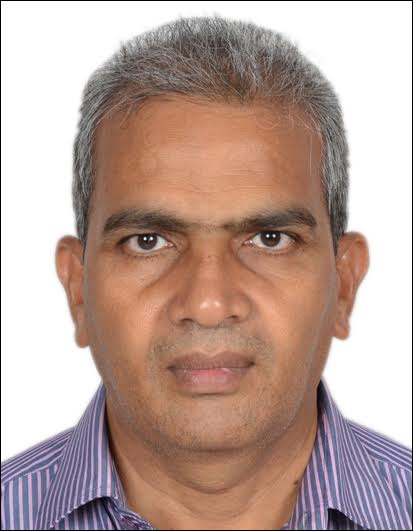Selective History: The Omissions from the Encyclopedia of Seventh-day Adventists
by Solomon Renati | 3 December 2024 |
History is not free of misconceptions.
For example, some still say that Christopher Columbus “discovered” America in 1492. That’s not exactly true. Nor did Amerigo Vespucci, who gave the continents of the western hemisphere his name. A Viking explorer named Leif Erikson landed in America about five centuries before either Columbus or Vespucci. And what we fail to acknowledge when we speak of someone “discovering” the Americas is that there were people on those continents already, who had presumably “discovered” them centuries before.
Such selective histories raise questions about why some narratives persist, while others fade. History can be a “partisan armory”: the first step in erasing a people’s legacy is to erase, or simply not acknowledge, their history. Someone will write new books that tell a different version of the story, and thus invent a new history. Before long, people will begin to forget what really happened. George Orwell famously said, “Whoever controls the past controls the future.”
Systems, both political and religious, have a tendency to manipulate history, often overplaying the contribution of a few blue-eyed boys, and downplaying or completely ignoring the contribution of others. The way we write history can turn zeros to heroes, and heroes to zeros.
Could this be the case with Adventist church history, as reflected in the Encyclopedia of Seventh-day Adventists (ESDA), the church’s online reference resource launched in 2020?
Anna P. Gordon
Anna Gordon is a case in point.
In 1890, this 25-year-old woman from Pennsylvania responded to a Presbyterian church’s call to serve as a missionary in India. During her voyage she met Miss Peck, a Seventh-day Adventist teacher, who introduced her to the Sabbath truth.
Upon reaching Liverpool, Anna attended several meetings by physician-turned-editor E. J. Waggoner, and became fully convinced of the Sabbath truth. She went to India and “became the first Sabbath-keeping self-supporting missionary to India in 1892, labouring in Bombay.”.
Anna succumbed to the Bombay plague in 1893. Yet her pioneering work had a lasting impact, gaining admiration even from other Christian missionaries. D.A. Robinson, who would later go as a missionary to India, was much impressed by her and corresponded with her about opening Adventist work in India. William Lenker, a subsequent Adventist missionary, hailed her as a “faithful worker” and an early teacher of Adventist doctrines in India.
Anna represents the courage and devotion of lay missionaries who blazed new trails for the Adventist faith in India. But she doesn’t have an entry in the ESDA.
Michał Belina-Czechowski
While John Nevins Andrews is officially credited as the church’s first missionary to Europe in 1874, Michał Belina-Czechowski, a Polish immigrant to the United States who joined the Adventist church in 1857, brought Adventism to Europe ten years earlier. He was denied official support due to suspicions about his Catholic background.
Undeterred, Michał went on to become the denomination’s first overseas lay missionary, winning converts throughout Europe, including Switzerland, Hungary, Italy, and Romania. His foundational work spurred the formation of the Adventist missions department, making him arguably the father of Adventist missions in Europe.
Michał doesn’t have an entry in the ESDA, either.
ESDA omission
Although the ESDA says it wants to include previously overlooked historical data from global regions, one must question their editorial decision to leave these unofficial missionaries out. It appears at odds with the ESDA’s stated mission to provide a comprehensive account.
It’s true that the ESDA project is dynamic and ongoing, so they may yet appear there. But I have to wonder whether it was because they were self-supported missionaries, who acted independently of General Conference sponsorship, that they weren’t recorded first. In fact, when I asked one of the local editors here in India about Anna, he replied that the ESDA only reflects those who were official church missionaries!
There is a recurring pattern of religious institutions’ determining who is “worthy” of recognition. Two thousand years ago, Jesus asked a question of the Pharisees: was John’s baptism from heaven, or of men? (Mark 11:30). The Pharisees did not accept John—a freelance preacher—as a missionary sent from God. Throughout history, religious authorities have had a tendency to assume they alone have power to determine who is God-sent and who is not.
On September 25, 2021, the Polish government commemorated Michał Belina-Czechowski by naming a city square in Krakow after him. Yet the ESDA has yet to formally recognize Czechowski’s pioneering contributions in Europe.
Inclusive representation
We cannot posthumously honor every neglected lay missionary. But we should be careful to include those who have contributed significantly even without official sponsorship. The church should take pride in lay members who serve in God’s mission independently, without adding financial strain on resources.
Selective recognition is not only limited to historical accounts, but extends into other areas of church life: appointments, ordinations, and committee representation—to name a few—are often influenced by nepotism, friendships, or power alliances.
The ESDA presents a curated version of church history, but history should reflect the experiences of all who have answered God’s call, whether officially recognized or not. To learn fully from our past, we must honor every voice that contributed to shaping our faith, regardless of institutional endorsement.
 Dr. Solomon Renati is an Adjunct Professor in Psychology at the University of Mumbai, Mumbai, India. He has a Ph.D. in Population Sciences from International Institute for Population Sciences, Mumbai, India, with postdoctoral studies in Health Psychology from Deakin University, Melbourne, Australia.
Dr. Solomon Renati is an Adjunct Professor in Psychology at the University of Mumbai, Mumbai, India. He has a Ph.D. in Population Sciences from International Institute for Population Sciences, Mumbai, India, with postdoctoral studies in Health Psychology from Deakin University, Melbourne, Australia.




